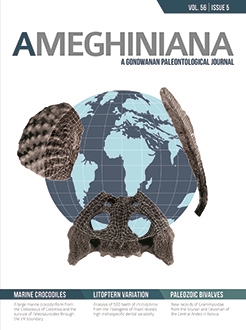Teleosauroid extinction at the Jurassic/Cretaceous boundary has been hypothesized to be an artifact of sampling only temperate paleolatitudes. Here, we describe the definitive youngest record of Teleosauroidea, from the upper Barremian of the paleotropics. The preserved material consists of dorsal vertebrae, dorsal ribs, dorsal and ventral osteoderms, and epipodial remains. We refer the specimen to Teleosauroidea based on the large hourglass-shaped amphiplatyan morphology of the dorsal centra and rectangular dorsal osteoderms, which are much wider than long and have a straight anterior edge. The South American specimen is one of the largest known teleosauroids, with an estimated body length of 9.6 m. This is the first evidence of a marine crocodylomorph recorded from the Paja Formation of Colombia. The survival of Teleosauroidea in the paleotropics of northern Gondwana following the group's extinction in Europe supports the hypothesis that water temperature played a role in controlling the diversity and distribution of these large marine predators.
BioOne.org will be down briefly for maintenance on 17 December 2024 between 18:00-22:00 Pacific Time US. We apologize for any inconvenience.
How to translate text using browser tools
6 October 2019
An Early Cretaceous Teleosauroid (Crocodylomorpha: Thalattosuchia) from Colombia
Dirley Cortés,
Hans C.E. Larsson,
Erin E. Maxwell,
Mary Luz Parra Ruge,
Pedro Patarroyo,
Jeffrey A. Wilson
ACCESS THE FULL ARTICLE

Ameghiniana
Vol. 56 • No. 5
December 2019
Vol. 56 • No. 5
December 2019
Colombia
Early Cretaceous
Late Barremian
Paja Formation
South America
Teleosauroidea
Thalattosuchia




